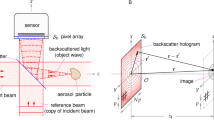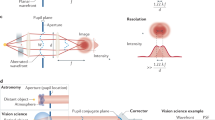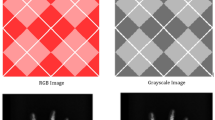Abstract
METHODS of contrast enhancement in astronomy, such as optical contrasting1 or optical printing onto a high-contrast material, include all grains throughout the emulsion thickness, and noise (fog), as well as the image, is enhanced. Fairly high levels of chemical fog (up to diffuse densities of 0.3) are common when plates are optimally hypersensitised by baking or prolonged soaking in nitrogen followed by reduction sensitisation in hydrogen gas. Shaw2 has shown that chemical fog seriously affects the detective quantum efficiency (DQE) of an emulsion when all the fog grains appear in the image as additional noise. I describe here a method that has been devised to make visible extremely faint images on astronomical plates without imaging fog grains. The images are not apparent on visual inspection and cannot be detected by conventional macro-densitometry. These effects result in a significant improvement in the visual detection of faint images on the original plate over the density range occupied by threshold imagery. The technique is most useful for revealing faint nebulosity and low surface brightness features on fine-grain high-contrast emulsions such as Kodak spectroscopic plates type IIIa.
This is a preview of subscription content, access via your institution
Access options
Subscribe to this journal
Receive 51 print issues and online access
$199.00 per year
only $3.90 per issue
Buy this article
- Purchase on Springer Link
- Instant access to full article PDF
Prices may be subject to local taxes which are calculated during checkout
Similar content being viewed by others
References
Clopeau, M. Photogr. Sci. Engng. 5, No. 3, 175–181 (1961).
Shaw, R. Photogr. Sci. Engng. 17, No. 6, 495–498 (1973).
Malin, D. F. Am. astr. Soc. Photogr. Bull. No. 16, 10–13 (1977).
Mees, C. E. K. & James, J. H. (eds) The Theory of the Photographic Process 3rd edn, 500–501 (Macmillan, London, 1966).
Furenlid, I., Schoening, W. C. & Carder, B. E. Am. astr. Soc. Photogr. Bull. No. 16, 14–16 (1977).
Johnson, H. M. Publs. natn. radio Astr. Obs. 1, 251–260 (1963).
Author information
Authors and Affiliations
Rights and permissions
About this article
Cite this article
MALIN, D. Photographic amplification of faint astronomical images. Nature 276, 591–593 (1978). https://doi.org/10.1038/276591a0
Received:
Accepted:
Issue Date:
DOI: https://doi.org/10.1038/276591a0
This article is cited by
Comments
By submitting a comment you agree to abide by our Terms and Community Guidelines. If you find something abusive or that does not comply with our terms or guidelines please flag it as inappropriate.



